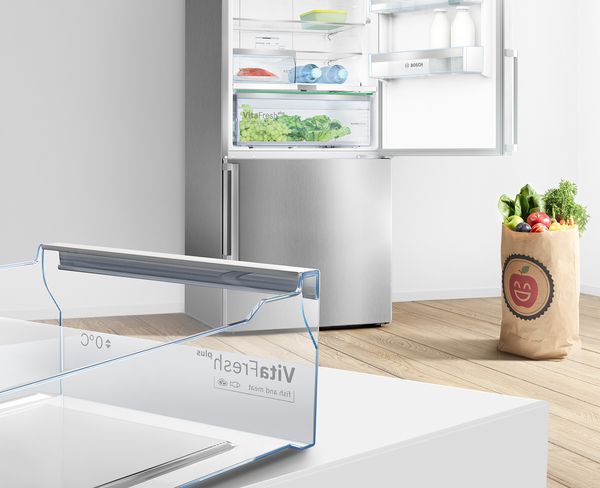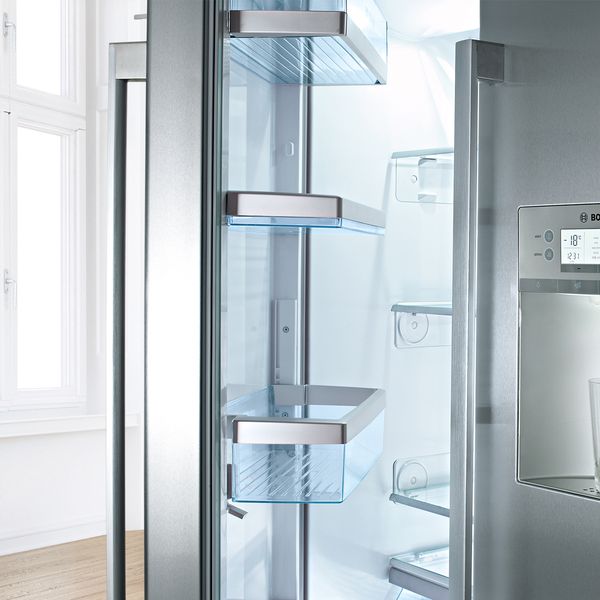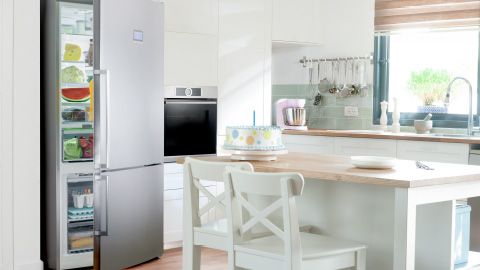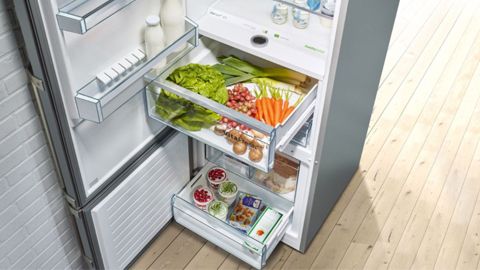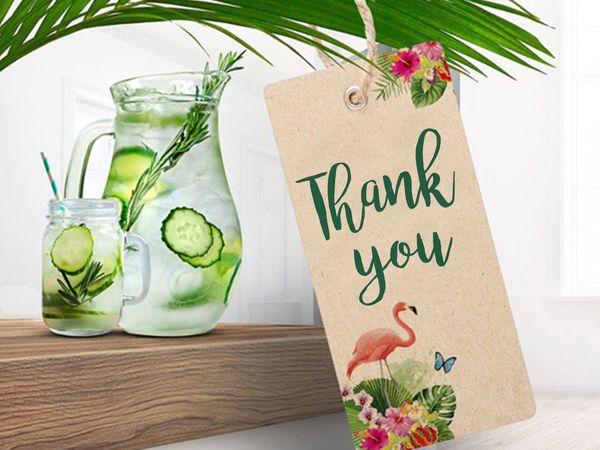You’ve got a stylish new fridge, and you’ve bought some beautiful produce, but do you know the right way to bring the two together? Or does your food and drink just get pushed in wherever there’s free space? If it’s the latter, you may find your shopping isn’t lasting as long as you’d expect it to, and there’s a good reason for that.
You may not realise it, but there’s a space for everything inside your fridge. Your appliances are designed with special zones to get the best out of your food shopping. All you have to do is follow our simple do’s and don’ts and top tips. Ready to learn the art of fridge storage? Read on for everything you need to know.
Why is the fridge organisation important?
Food tastes best when it’s fresh, especially fruit and vegetables. But it won’t stay that way for long if it isn’t stored correctly. That’s where your fridge comes in. Refrigeration preserves all that goodness, locks in vitamins, minerals and nutrients, and helps your food stay fresh and tasty for longer.
This reduces the chance of food waste and will save you money by helping your weekly shopping go further. Good fridge storage is also essential for your health as it minimises the chance of bacteria getting into your food and making you unwell.
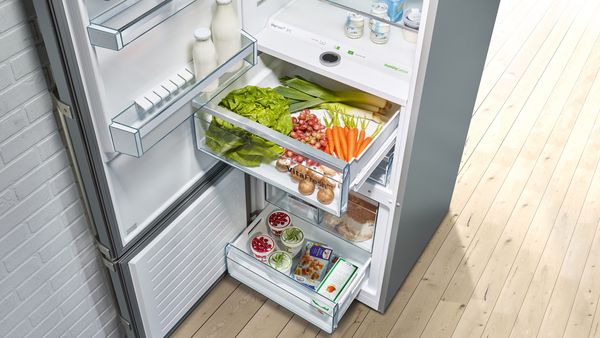
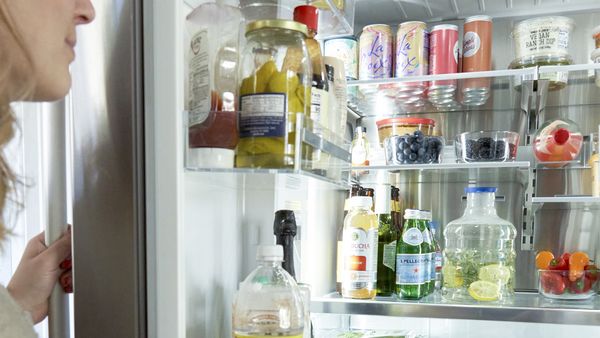
How do you organise a fridge properly?
How to do fridge food storage like a pro. To put it simply, different kinds of produce – meat, fish, vegetables, fruit, dairy, and more – need to be stored differently.
There are particular places in your fridge where your food will stay at its best for longer. For instance, fish, meat and dairy products should be stored in dry conditions with low humidity. At the same time, vegetables need compartments with higher humidity. Let’s take a look.
Upper shelf
Cooked foods, ready-to-eat meals, deli meats, baked items, and leftovers can be kept on the top shelf of your fridge. This average temperature in the upper part of your fridge will be between 5° and 8°.
Middle shelf
You can store dairy products like milk, cheese, yoghurt and butter on the middle shelf. The temperature here should be about 5°. As a bonus tip, try taking the cheese out of the fridge around 30 minutes before you plan to use it for the best flavour and aroma.
Lower shelf
The temperature here is closer to zero. If you don’t have a dedicated fresh food drawer below this, then this is the shelf to keep raw meat and fish. You can also store some of the items from your middle shelf here like milk and cream, providing everything is kept in separate containers or sealed packaging. This is very important with meats and cheeses.
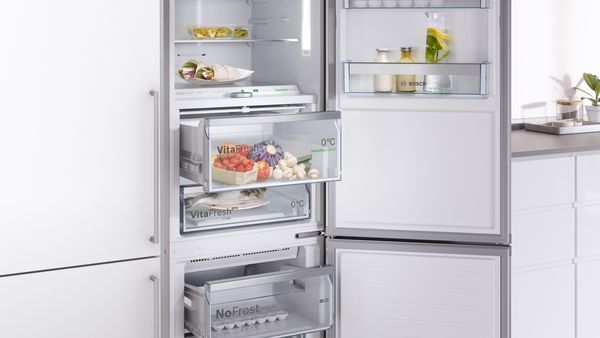
Humidity drawer
Did you know that fruit and vegetables continue to live even after being harvested? Correct storage ensures that the nutrients are preserved, especially vitamins. Vegetables need higher levels of humidity, and many modern fridges will offer a dedicated drawer for this, so be sure to use it.
This is the drawer to store your vegetables and some fruits. The drawer also keeps your vegetables, fruit and salad leaves away from the back of the fridge – one of the coldest parts – where they can accidentally freeze.
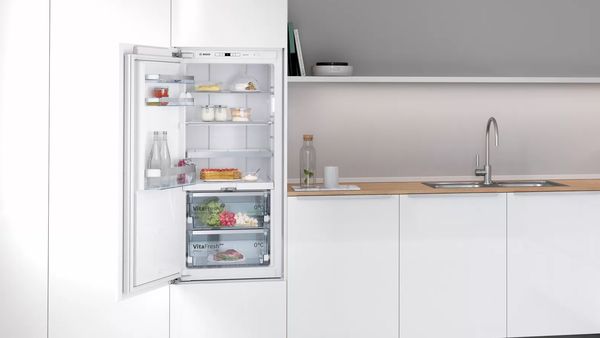
Fresh food drawer
This is the bottom drawer and the lowest part of your fridge where the temperature is coldest. Just as modern fridges have humidity drawers for fruit and vegetables, many also have a fresh food drawer in this bottom space for raw meat and fish. This needs to be chilled at the coldest temperature in your fridge to stay fresh. Storing raw food at the bottom of your fridge also keeps it away from cooked food and reduces the risk of cross-contamination.
Fridge door
You might have been surprised earlier to discover that milk goes on the middle shelf and not in your fridge door. The reason for this is that the fridge door is more susceptible to temperature fluctuations.
You can keep butter and soft dairy in the door (in the upper door rack) as they don’t need to be stored at cold temperatures. If you do need to keep milk there, put it towards the back of the bottle rack where the coolness is almost constant. Otherwise, your fridge door should be for drinks and condiments that have been opened like sauces and jams.
Outside your fridge
As a final bonus tip, don’t forget the outside of your fridge (for items that don’t need refrigeration). Side of fridge storage includes magnetic shelves, spice racks, and whiteboards. You can also keep attractive bottles and jars that don’t need to be refrigerated on top of your fridge in a carefully curated display.
How do you organise a fridge properly?
The Food Standards Agency (FSA) recommends this should be between 3-5°C. Most fridges allow you to set and maintain the temperature. In some modern appliances, it’s possible to control the temperature and humidity of each compartment. There are even ‘smart’ fridges that can help do this for you.
Buy a fridge that helps your organise
Industry-leading fridges have introduced exciting innovations that can go a long way to helping you become more organised. Not to mention getting the best out of your fresh food.
From simple features like alarms to tell you when you’ve forgotten to close your fridge to more innovations like appliances with ‘object recognition’, which can tell you where to store what. The latest technology is here to help.
Door alarms
The alarm system signals a sound or light when the door isn’t closed correctly, warning you of temperature fluctuations.
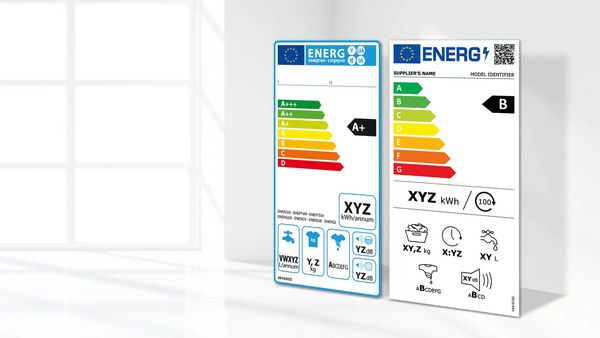
Temperature and humidity control
Innovative modern fridges have many thoughtful features for helping control humidity and temperature. These include sensors that keep a constant temperature inside your fridge, as well as a ‘super cool’ function that makes it extra cold for a period when you’re putting new shopping away.
Energy saving
Fridges with lower power consumption keep your food fresh while watching your energy bill.
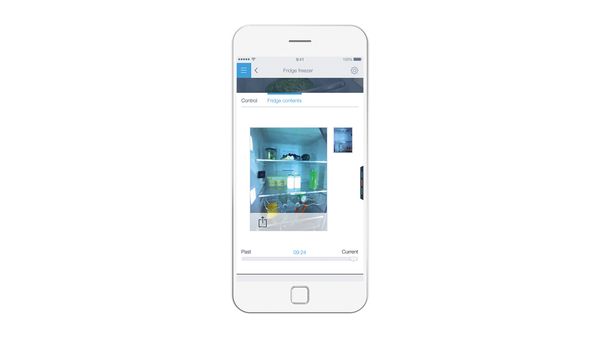
Adjustable shelving
Fridges with adjustable and removable shelving offer you more flexibility when it comes to storage.
Connect and control your fridge with an app
One of the most exciting innovations is being able to connect your fridge with your smart device via an app. This lets you see inside your fridge when you’re out shopping or use ‘object recognition’ on your app, which gives you advice on where items should be stored inside your fridge.
A fridge is an essential appliance in every home and the cornerstone of a great kitchen. By investing in quality and innovation, you’ll be rewarded with peak performance and reliability. With a great fridge, you get back what you put in – literally – in the form of fresh, tasty, perfectly-chilled produce.
Learn more about controlling your fridge with HomeConnect.
Connect and control your fridge with an app
One of the most exciting innovations is being able to connect your fridge with your smart device via an app. This lets you see inside your fridge when you’re out shopping or use ‘object recognition’ on your app, which gives you advice on where items should be stored inside your fridge.
A fridge is an essential appliance in every home and the cornerstone of a great kitchen. By investing in quality and innovation, you’ll be rewarded with peak performance and reliability. With a great fridge, you get back what you put in – literally – in the form of fresh, tasty, perfectly-chilled produce.
Fridge storage tips
You may know what goes where, but there are lots of creative fridge storage ideas too. Here’s a selection of the best fridge organisation tips and hacks as well as a few general pieces of fridge-related advice:
Always keep raw and cooked food seperate
It’s important to keep raw and cooked foods apart, ideally with the former in the coldest bottom drawer of the fridge and the latter on the top shelf. Remember to keep each in sealed packaging or containers too.
Berries love vinegar
It’s important to keep raw and cooked foods apart, ideally with the former in the coldest bottom drawer of the fridge and the latter on the top shelf. Remember to keep each in sealed packaging or containers too.

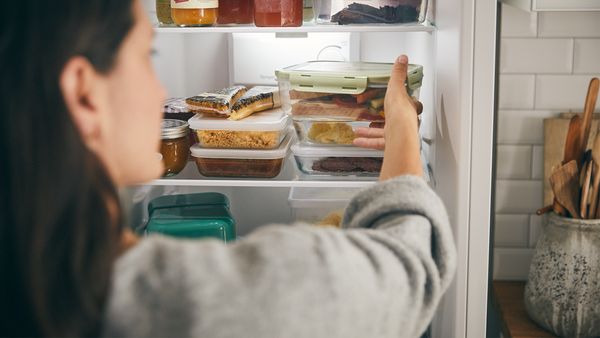
How to keep opened salad fresh
After you’ve opened a bag of salad, it doesn’t take long for it to turn. To keep it fresh, try putting a sheet of kitchen paper inside the salad bag. That way, moisture is absorbed, and your salad will stay fresh for longer.
Use fridge storage containers to keep food sealed
From glass jars to airtight Tupperware and dividers, tiered organisers and turntables, there are lots of fridge storage boxes, accessories, and solutions out there. It’s also vital to keep certain foods separate.
What foods shouldn't go in your fridge?
Finally, what doesn’t go in the fridge? Well, perhaps the most obvious is hot food. This will increase the overall temperature of your fridge, causing a ripple effect of fluctuations that could cause other items to spoil. It could also potentially spread bacteria and cause food poisoning. Always let hot food cool down out of the fridge before storing it. And when you do, put it on the top shelf.
While that may seem obvious, some foods don’t go in the fridge. These include ‘gas releasing’ fruit and vegetables, which can cause other food to spoil, such as tomatoes, avocados, bananas, pears, plum, and nectarines. The cold air in your fridge can also prevent ripening, causing some of these items, particularly tomatoes, to lose their aromatic flavour. They are much better off stored at room temperature in a bowl. Avocados can be kept in the fridge in an airtight container with half an onion. Alternatively, you could wrap them in cling film or sprinkle with lemon juice.
Other everyday food items that don’t need to be refrigerated include potatoes. The starch in the potato is converted to sugar by the cold. And when that happens, the potato tastes a little too sweet and mealy. Potatoes are better off in cool, dark places elsewhere in your kitchen. Bread shouldn’t be kept in the fridge either. Still, it can be frozen.
How to keep your food fresh for longer
Once you have the knowledge, the fridge organisation simply takes a little extra thought and consideration when you’re putting away your shopping. Investing in a quality fridge can really help too. The reward is produce that lasts longer and tastes better, reducing food waste, making your money go further and helping you to create delicious meals. In other words, look after your fridge, and it will look after you.
VitaFresh - the best fridges for vegetables
VitaFresh’s temperature and humidity controlled compartments enable you to store different fresh foods separately and in the best possible environment.
Our VitaFresh technology helps you keep your vegetables and fruits fresh for longer, resulting in more food to enjoy and less to be wasted. We believe that zero food waste is not only a goal to strive for, but a goal that can actually be achieved.
